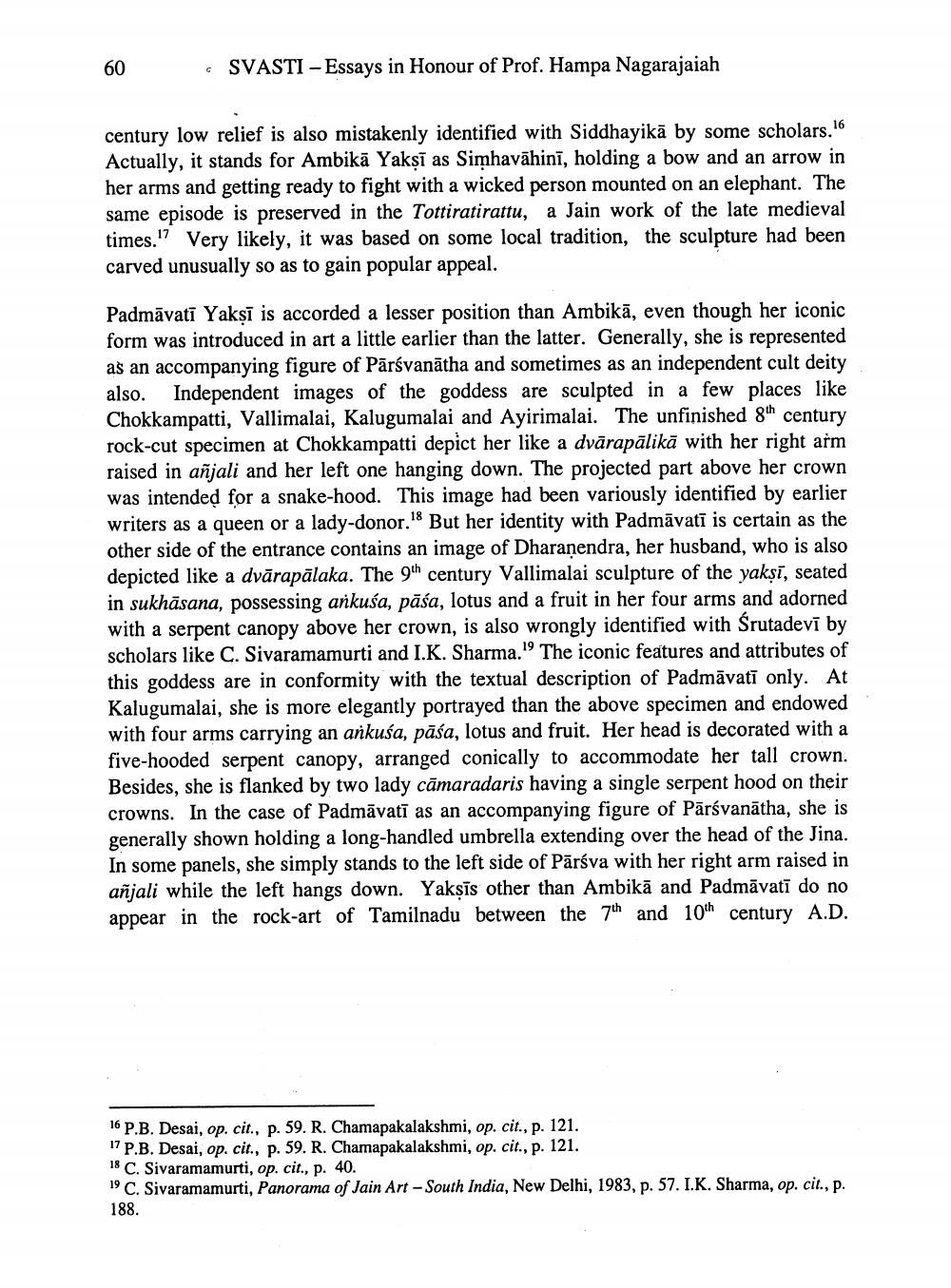________________
- SVASTI – Essays in Honour of Prof. Hampa Nagarajaiah
century low relief is also mistakenly identified with Siddhayikā by some scholars.16 Actually, it stands for Ambikā Yakṣī as Simhavāhinī, holding a bow and an arrow in her arms and getting ready to fight with a wicked person mounted on an elephant. The same episode is preserved in the Tottiratirattu, a Jain work of the late medieval times." Very likely, it was based on some local tradition, the sculpture had been carved unusually so as to gain popular appeal.
Padmāvati Yakşi is accorded a lesser position than Ambikā, even though her iconic form was introduced in art a little earlier than the latter. Generally, she is represented as an accompanying figure of Pārsvanātha and sometimes as an independent cult deity also. Independent images of the goddess are sculpted in a few places like Chokkampatti, Vallimalai, Kalugumalai and Ayirimalai. The unfinished 8th century rock-cut specimen at Chokkampatti depict her like a dvārapālikā with her right arm raised in añjali and her left one hanging down. The projected part above her crown was intended for a snake-hood. This image had been variously identified by earlier writers as a queen or a lady-donor." But her identity with Padmāvati is certain as the other side of the entrance contains an image of Dharanendra, her husband, who is also depicted like a dvārapālaka. The 9th century Vallimalai sculpture of the yakṣī, seated in sukhāsana, possessing arkusa, pāśa, lotus and a fruit in her four arms and adorned with a serpent canopy above her crown, is also wrongly identified with Śrutadevi by scholars like C. Sivaramamurti and I.K. Sharma." The iconic features and attributes of this goddess are in conformity with the textual description of Padmāvatī only. At Kalugumalai, she is more elegantly portrayed than the above specimen and endowed with four arms carrying an arkuśa, pāśa, lotus and fruit. Her head is decorated with a five-hooded serpent canopy, arranged conically to accommodate her tall crown. Besides, she is flanked by two lady cāmaradaris having a single serpent hood on their crowns. In the case of Padmāvatī as an accompanying figure of Pārsvanātha, she is generally shown holding a long-handled umbrella extending over the head of the Jina. In some panels, she simply stands to the left side of Pārśva with her right arm raised in añjali while the left hangs down. Yaksīs other than Ambikā and Padmāvati do no appear in the rock-art of Tamilnadu between the 7th and 10th century A.D.
16 P.B. Desai, op. cit., p. 59. R. Chamapakalakshmi, op. cit., p. 121. 17 P.B. Desai, op. cit., p. 59. R. Chamapakalakshmi, op. cit., p. 121. 18 C. Sivaramamurti, op. cit., p. 40. 19 C. Sivaramamurti, Panorama of Jain Art - South India, New Delhi, 1983, p. 57. I.K. Sharma, op. cit., p. 188.




